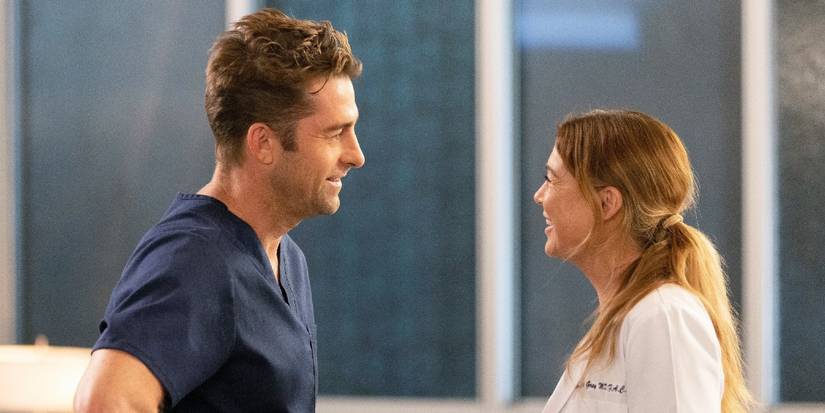Ever since Dr. Derek Shepherd, the love of Dr. Meredith Grey’s life, was killed off of Grey’s Anatomy in season 11 in 2015, the medical drama has been searching for her next great love interest, and, because she and Dr. Nick Marsh are the show’s worst couple, they must break up in season 22. Fans across the Internet have taken to social media to express their distaste for the pairing, so their relationship should end.
Meredith (Ellen Pompeo) and Nick (Scott Speedman) first met during season 14 when he was a patient at Grey Sloan Hospital. He returned in season 18, and he and Meredith eventually began dating and later became a couple.
After Derek’s death, Meredith has been involved with several men, including William Thorpe (Scott Elrod), Nathan Riggs (Martin Henderson), Andrew DeLuca (Giacomo Gianniotti), and Cormac Hayes (Richard Flood), and those relationships didn’t work out, but Nick has been her worst pairing by far.
Meredith Takes Nick For Granted
Throughout their relationship, Meredith has repeatedly taken Nick for granted. When she decided to move to Boston, she didn’t discuss it with him at all, which made him feel as though he wasn’t really a part of her life. Later, when Meredith’s son, Bailey, suffered from early appendicitis while she was away, Nick rushed him to the hospital.
Instead of thanking him for caring for her son, Meredith was livid with Nick for making a medical decision regarding him without her consent. She told him that she was all her children had, but Nick pointed out to her that she actually had a village, including him. Meredith explained that she’d been doing things on her own for a long time, and it might take her a minute to adjust. Nick responded that he had a minute.
Even though Nick gives his all to their relationship, Meredith has consistently proven that she doesn’t appreciate him. She even once pretended not to hear him during a phone call when he told her that he loved her. Nick always forgives her and takes her back, but this is an unhealthy pattern. Nick deserves better, which is why he should move on from Meredith.
Meredith Believes She’s ‘The Sun’
During Grey’s Anatomy season 10, before Meredith’s best friend, Dr. Cristina Yang (Sandra Oh) left the hospital, she gave her some advice about Derek. She told her, “You are a gifted surgeon with an extraordinary mind. Don’t let what he wants eclipse what you need. He’s very dreamy, but he is not the sun. You are.”
While this quote was very powerful at the time because of the dynamics of Meredith and Derek’s relationship, it has since made Meredith believe that she’s the center of the universe, and everyone else revolves around her. Meredith had previously pleaded with Derek to “pick me, choose me, love me,” but, in a stunning reversal, she told Nick that she wouldn’t beg him to love her.
While it’s been wonderful to see Meredith grow over the years, she needs to find a balance between being a strong, independent woman and a considerate partner. She and Nick should be equals in their relationship, but instead she acts like she’s doing him a favor by being with him, and it’s hard to watch. Meredith has to stop applying Cristina’s advice to her relationship with Nick, even if it’s subconscious, because he’s not Derek.
Meredith and Nick’s relationship has run its course, and she doesn’t prioritize it in any way. Her children and her career will always come first, especially her Alzheimer’s research. The Internet is right: Meredith and Nick are Grey’s Anatomy’s worst couple, and they should break up in season 22.
Grey’s Anatomy season 22 premieres on Thursday, October 9 at 10 p.m. EDT.

Grey’s Anatomy
- Release Date
-
March 27, 2005
- Directors
-
Rob Corn, Kevin McKidd, Debbie Allen, Chandra Wilson, Allison Liddi-Brown, Jeannot Szwarc, Tony Phelan
-

Ellen Pompeo
Dr. Meredith Grey
-

Chandra Wilson
Dr. Miranda Bailey
This story originally appeared on Screenrant














